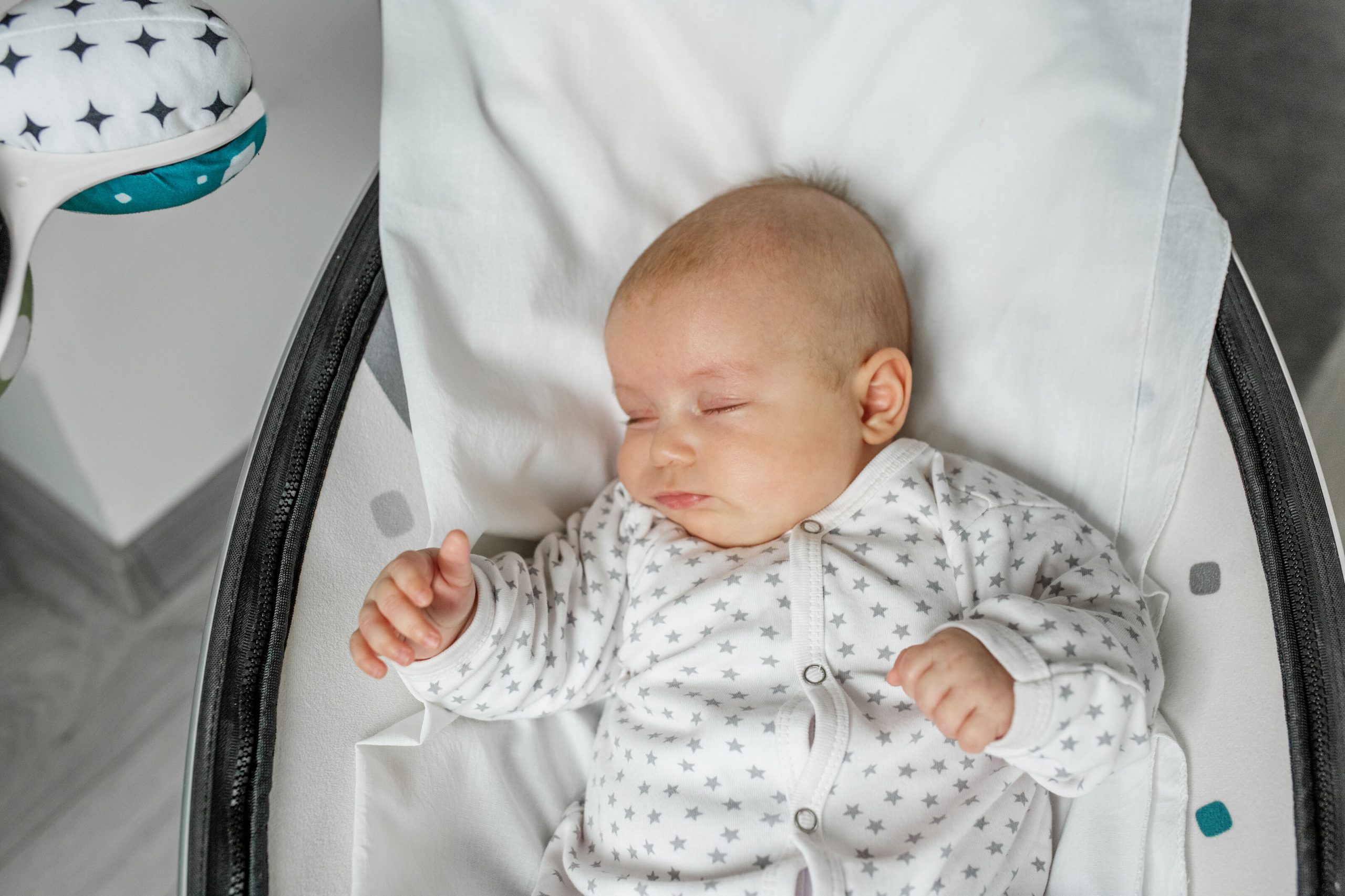Parenting involves many decisions, including selecting the right baby equipment. Baby swings and bouncers are popular choices, offering gentle motion and entertainment, but they differ in design, function, and purpose.
A baby swing is a motorized seat that moves back and forth, side-to-side, or in a circular motion, designed to soothe and calm babies. These swings often come with additional features like music, vibration, and hanging toys to provide sensory stimulation.
Pros of Baby Swings
- Soothing motion: Baby swings mimic the rhythmic rocking motion that babies experience in the womb, which can help calm fussy babies and even lull them to sleep.
- Hands-free time for parents: Having a secure place to put a baby while they are calm and content allows parents a brief respite to attend to household tasks or personal needs.
- Entertainment features: Many baby swings come with built-in features, such as soothing sounds or gentle vibrations, which help keep babies entertained and engaged.
- Variety of motion settings: Baby swings offer various motion settings that can cater to individual preferences, making them more versatile in soothing techniques.
Cons of Baby Swings
- Limited mobility for baby: Baby swings can restrict a baby’s movement, keeping them in one place, which may delay the development of motor skills if used excessively.
- Space and portability issues: Baby swings are often bulkier than other baby seats and may take up a significant amount of space, making them less ideal for smaller homes or frequent travel.
- Dependency risk: Over-reliance on a baby swing for sleep or comfort may create a habit, making it difficult for some babies to fall asleep without motion once accustomed.
- Potential safety concerns: There have been recalls on certain models due to injuries from improper use or malfunction. It’s crucial to follow all safety guidelines and choose a swing that complies with safety standards.
What Is a Baby Bouncer?
A baby bouncer is a non-motorized seat that moves when the baby kicks or shifts, creating a natural bouncing motion. Unlike swings, baby bouncers rely on the baby’s movements, encouraging physical interaction and play.
Pros of Baby Bouncers
- Encourages physical activity: Because baby bouncers respond to a baby’s own movements, they can help develop muscle strength, coordination, and early motor skills.
- Compact and portable: Baby bouncers are generally lightweight and compact, making them easy to move around the house or take along while traveling.
- No electrical dependency: Unlike motorized swings, bouncers don’t require electricity or batteries, which reduces costs and environmental impact.
- Variety of positions: Many baby bouncers can be adjusted to different reclining positions, making them suitable for play and rest.
Cons of Baby Bouncers
- Limited soothing effect: Since they don’t have a motorized rocking motion, bouncers may not be as effective in calming particularly fussy babies.
- Shorter usage duration: Babies may outgrow bouncers quickly, especially if they become more mobile and start sitting up independently.
- Not ideal for napping: Baby bouncers aren’t typically designed for prolonged or unsupervised sleep, and they may lack the necessary support for safe napping.
- Weight limit: Most bouncers have a weight limit of 20 pounds or less, meaning they may only be suitable for infants and younger babies.
Which One Is Better?
Ultimately, the choice depends on your baby’s preferences and your family’s needs. Here’s a quick guide to help you decide:
- Choose a baby swing if:
- Your baby responds well to a rocking motion for soothing.
- You have space for a larger piece of equipment.
- You want added features, like music or adjustable settings.
- Choose a baby bouncer if:
- You need a portable, lightweight option that you can easily carry from room to room.
- You want something that encourages baby’s movement.
- You prefer a simpler, budget-friendly option.
Baby swings and bouncers are generally safe when used properly, but certain precautions are essential. Always follow age and weight limits to prevent falls, supervise your baby to avoid risks like positional asphyxiation, and avoid using these devices for sleep to reduce the risk of SIDS. Additionally, choose products certified by safety standards organizations for added security.
In conclusion, the baby swing vs. bouncer decision comes down to knowing your baby’s needs and lifestyle. Both options offer advantages, with swings providing a soothing, stationary solution, and bouncers promoting movement and interaction. Remember to always prioritize safety by using these items under supervision, following weight limits, and avoiding prolonged sleep.









